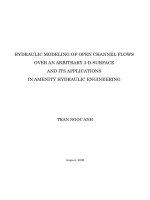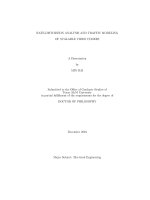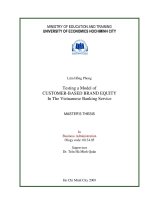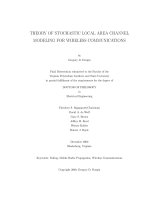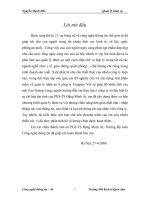Roy adaptation model
Bạn đang xem bản rút gọn của tài liệu. Xem và tải ngay bản đầy đủ của tài liệu tại đây (276.7 KB, 36 trang )
Roy Adaptation Model
By: Sathish Rajamani M.S c (N)
Lecturer,
BKIN – Daudhar.
Humanism
Philosophy and psychology that recognizes
the person and subjective dimensions of the
human experience as central to knowing
and valuing.
Discuss the relationship of
systems theory to Roy Model.
Based on assumptions of von Bertalanffy’s
General Systems Theory
Based on assumptions of Helson’s
Adaptation-Level theory
Humanism
Veritivity
Veritivity
Principle of human nature that affirms a
common purposefulness of human
existence, activity and reactivity for the
common good and value and meaning of
life.
Discuss the concepts of
adaptation model.
Adaptive: Human system has the capacity
to adjust effectively to changes in the
environment and affects the environment.
Promote survival, growth, reproduction &
mastery.
System
Set of parts connected to function as a
whole for some purpose and through the
interdependence of the parts.
Input--Through put--Output--Feedback
Adaptive Level
Changing Point influenced by the demands
of the situation and the person’s internal
resources, including capabilities hopes,
dreams, aspirations, motivations.
Represents the persons ability to respond.
Adaptive Level
The response (output) or behavior is a
function of the input stimuli and the
adaptation level.
It is adaptive or ineffective.
Identify the environment as a
significant concept of
adaptation.
Stimuli are environmental influences.
3 type: focal contextual, or residual.
Focal Stimuli
Internal or external stimulus most
immediately confronting the person
Contextual Stimuli
All other stimuli present that contribute to
the focal stimuli.
Influence how the person can deal with the
focal stimulus.
Contextual Stimuli
Residual Stimuli
Factors whose effect in the current situation
is unclear.
No clear data.
Based on theory or experience of the nurse.
Residual Stimuli
?
?
?
?
?
?
Coping Mechanisms
Innate or acquired ways of responding to
the changing environment.
Innate are genetically determined or
common to the species and automatic
processes.
Acquired are developed through learning
and other process.
Coping Mechanisms
Regulator
Regulator Subsystem
Automatic responses through neural,
chemical and endocrine coping processes.
Coping Mechanisms
Regulator
Cognator
Cognator Subsystem
Perceptual/information processing,
learning, judgment, and emotion
Perceptual/information
Processing Examples:
Selective Attention
Coding
Memory


